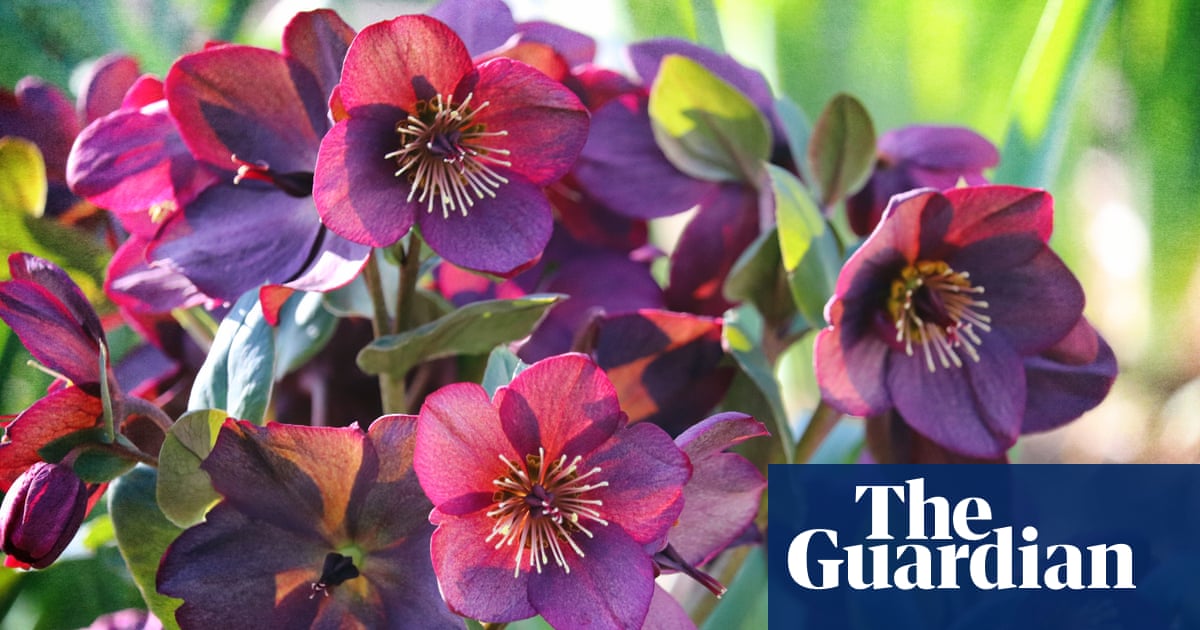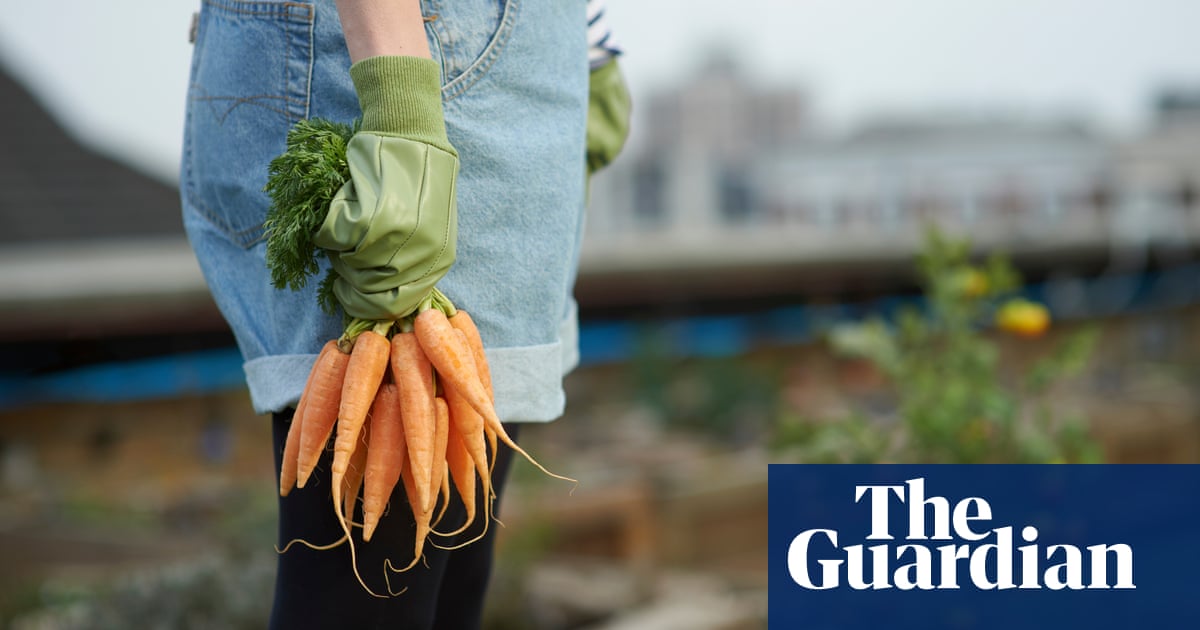
The moment I knew our home purchase was final, last April, I ransacked my mother’s garden for cuttings. It was still a little early in the season, but I couldn’t hold back: budding twigs of viburnum, potentilla, black elder and buddleja were thrust into compost. Despite having gardened professionally for well over a decade, managing and maintaining gardens from green city pockets up to modest rural estates, this would be my first ever garden.
It is a small, slim rectangle: 80 square metres of chalky, free-draining Hampshire soil – two-thirds of which is lawn – in a village fringing the North Wessex Downs. It is north-facing yet exposed, and therefore surprisingly sun baked between the equinoxes, and, to our delight, relatively free of pre-existing structures: a tiny shed, a thin strip of border, a miscellany of pots and a beer-branded barbecue – my potting bench, until it is forcibly rehomed – but otherwise a horticultural blank canvas.
There is a strong argument for spending a full year observing a new garden before making significant adjustments. My opposing view is that gardens are for the doing, whatever time of year. So, in the hope of encouraging those who, like me, are endeavouring towards sustainable and affordable gardening, here’s what I’ve done so far, and the tasks I’ll be doing in the next few months.
Multiply existing plants
First, I took stock of what was already here – it is surprising just how many plants can reside within an area both small and seemingly sparse. I counted some 30 varieties, including hellebore, aquilegia and Solomon’s seal, and for every weed there was an attractive self-seeder: white-flowering herb Robert alongside rampant bittercress; gorgeous feverfew and purple violet next to dandelion and bindweed.
Desirable or otherwise, existing plants reveal much about a garden, from soil type to light distribution, and by multiplying those that thrive – by means of division – herbaceous perennials can be quickly bulked up as ground cover. Of those I’d earmarked in summer, I’m now splitting and replanting pulmonaria, marjoram and cranesbill geranium, creating fat new plants. Typically, this is best undertaken as the soil warms towards spring.
Add a compost bin and water butt
If, like me, you’re going to be ruthless with undesirables – and friends and family can’t be persuaded into rehoming a flouncy fuchsia or redundant hydrangea – a compost bin is essential. Most council recycling centres will produce compost from your green waste, but why not make your own? In time, and when the salvage materials appear, I plan to construct a pair of wooden bins; in the meantime, GetComposting partners with local councils to provide composters ideal for small gardens like ours. Along with discarded roots and annual weeds, in goes our food waste and cardboard packaging. GetComposting also offers reasonably priced water butts which, connected to a down pipe, will collect rainwater for the heatwaves ahead.
Make a cold frame
The garden masterplan held loosely in my head does not currently include a greenhouse – there isn’t really room. But a cold frame, in which hardy annuals and perennials can be nurtured, and cuttings protected from frost, is crucial.
I made a makeshift frame from rigid Perspex (owing to the dismantlement of Covid-safe screens in shops, there is a surplus – ask around). By affixing a square sheet to a length of off-cut shelving sawn diagonally in half, and placing this against a sunny wall, I’ve made myself a little hotbox for this year’s sowings – echinacea, salvia, sweet pea and the annual bishop’s flower, Ammi visnaga. Seed packet expense can quickly rack up, so I’ll be sowing collectedas well as shop bought, seed: campion and sea holly from friends; and purple scabious and tall teasel from a nearby hedgerow.
Hardwood cuttings
Winter is the season for hardwood cuttings, when plants are dormant. Stems of pencil thickness (and length) taken from shrubs like dogwood, blackcurrant, weigela and jasmine can be snipped below a leaf node and potted into a loamy compost, or stuck straight into the ground. With luck, new leaves will appear in spring. And cutting material is everywhere: a crafty snip of a car park syringa can prove priceless in future years.
Rethink the lawn
We’ll retain a central section of lawn for our young children – I’m not a monster! – but witnessing the grass scorch and brown last summer reinforced my resolve to significantly reduce it in favour of plantings.
Change must occur gradually, however: bare earth is vulnerable to nutrient loss, topsoil erosion and overheating in high summer, which in turn leads to poor microbial activity. So I have removed only what I can swiftly plant up, creating two borders: one loosely productive (herbs, salads and a few vegetables), the other ornamental. Before doing so, however, I enriched the exposed soil with organic top-mulch. Rural stables and city farms are great for this (as are local tree surgeons for wood chippings); in our case, a local smallholder offered copious well-rotted horse manure in exchange for an occasional brush of the resident Shetland pony. Deal.
Plant a tree
Autumn-winter is the season for ordering and planting bare-root trees and shrubs (typically cheaper than potted) – seek out local fruit varieties as they’ll be more suited to your plot, and reduce delivery costs. I have planted an almond. With so many fantastic domestic-scale tree options (hawthorns, amelanchiers, redbuds, cherries, to name a few) the choosing wasn’t easy, but the almond – Prunus dulcis ‘Sultane’ – ticked the requisite boxes: spring blossom for pollinators, multiple stems over a tall trunk, productive fruit (nuts), climate suitability and a preference for chalky (alkaline) soils. Every inch of fence is also fair game, so along with inevitable climbers (Virginia creeper, Cobaea scandens, winter clematis), I plan on training a handful of apples and pears as horizontal espaliers.
I am also planting hazels. Whether intentional or not, one of the most ingenious plantings I have ever encountered was that of a hazel beside a vegetable plot: a renewable source of pea sticks within easy reach of the sweet peas and climbing beans. Planting two improves cross pollination for fruit, so I have opted for ‘Cosford’ (decorative husks) and ‘Purpurea’ (attractive leaves) cultivars.












